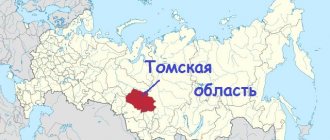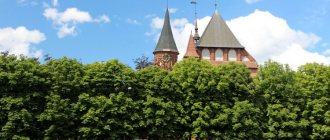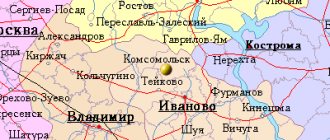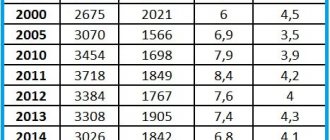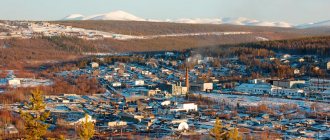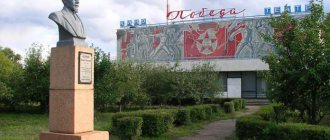Holiday calendar, signs, dates and events for every day of the year - folk calendar, Orthodox calendar, church calendar, eastern calendar, astrological calendar, lunar calendar, industrial calendar, as well as state and professional holidays, including significant World and International holidays and public holidays , folk holidays and omens, and other equally interesting and unusual holidays, dates and events of the year, zodiac signs, dream books and much more.
Calendar for 2022
| January | ||||||
| Mon | W | Wed | Thu | Fri | Sat | Sun |
| February | ||||||
| Mon | W | Wed | Thu | Fri | Sat | Sun |
| March | ||||||
| Mon | W | Wed | Thu | Fri | Sat | Sun |
| April | ||||||
| Mon | W | Wed | Thu | Fri | Sat | Sun |
| May | ||||||
| Mon | W | Wed | Thu | Fri | Sat | Sun |
| 1 | ||||||
| 2 | 3 | 4 | 5 | 6 | 7 | 8 |
| 9 | 10 | 11 | 12 | 13 | 14 | 15 |
| 16 | 17 | 18 | 19 | 20 | 21 | 22 |
| 23 | 24 | 25 | 26 | 27 | 28 | 29 |
| 30 | 31 | |||||
| June | ||||||
| Mon | W | Wed | Thu | Fri | Sat | Sun |
| 1 | 2 | 3 | 4 | 5 | ||
| 6 | 7 | 8 | 9 | 10 | 11 | 12 |
| 13 | 14 | 15 | 16 | 17 | 18 | 19 |
| 20 | 21 | 22 | 23 | 24 | 25 | 26 |
| 27 | 28 | 29 | 30 | |||
| July | ||||||
| Mon | W | Wed | Thu | Fri | Sat | Sun |
| 1 | 2 | 3 | ||||
| 4 | 5 | 6 | 7 | 8 | 9 | 10 |
| 11 | 12 | 13 | 14 | 15 | 16 | 17 |
| 18 | 19 | 20 | 21 | 22 | 23 | 24 |
| 25 | 26 | 27 | 28 | 29 | 30 | 31 |
| August | ||||||
| Mon | W | Wed | Thu | Fri | Sat | Sun |
| 1 | 2 | 3 | 4 | 5 | 6 | 7 |
| 8 | 9 | 10 | 11 | 12 | 13 | 14 |
| 15 | 16 | 17 | 18 | 19 | 20 | 21 |
| 22 | 23 | 24 | 25 | 26 | 27 | 28 |
| 29 | 30 | 31 | ||||
| September | ||||||
| Mon | W | Wed | Thu | Fri | Sat | Sun |
| 1 | 2 | 3 | 4 | |||
| 5 | 6 | 7 | 8 | 9 | 10 | 11 |
| 12 | 13 | 14 | 15 | 16 | 17 | 18 |
| 19 | 20 | 21 | 22 | 23 | 24 | 25 |
| 26 | 27 | 28 | 29 | 30 | ||
| October | ||||||
| Mon | W | Wed | Thu | Fri | Sat | Sun |
| 1 | 2 | |||||
| 3 | 4 | 5 | 6 | 7 | 8 | 9 |
| 10 | 11 | 12 | 13 | 14 | 15 | 16 |
| 17 | 18 | 19 | 20 | 21 | 22 | 23 |
| 24 | 25 | 26 | 27 | 28 | 29 | 30 |
| 31 | ||||||
| November | ||||||
| Mon | W | Wed | Thu | Fri | Sat | Sun |
| 1 | 2 | 3 | 4 | 5 | 6 | |
| 7 | 8 | 9 | 10 | 11 | 12 | 13 |
| 14 | 15 | 16 | 17 | 18 | 19 | 20 |
| 21 | 22 | 23 | 24 | 25 | 26 | 27 |
| 28 | 29 | 30 | ||||
| December | ||||||
| Mon | W | Wed | Thu | Fri | Sat | Sun |
| 1 | 2 | 3 | 4 | |||
| 5 | 6 | 7 | 8 | 9 | 10 | 11 |
| 12 | 13 | 14 | 15 | 16 | 17 | 18 |
| 19 | 20 | 21 | 22 | 23 | 24 | 25 |
| 26 | 27 | 28 | 29 | 30 | ||
Designations in the calendar: X - holidays; X—weekends; X - reduced working day by 1 hour;
Shuya has relatives in Valdai
As Kirill Baldin noted, “slightly less ancient than Plyos and Yuryevets are cities in the Ivanovo region, founded during the Mongol-Tatar yoke: Shuya, Lukh, Kineshma.” You can add Gavrilov Posad to this list.
A number of historians claim that Shuya was mentioned in Russian chronicles already in 1393–1394 as a significant settlement in the Nizhny Novgorod principality. Although as a settlement, without a doubt, it arose much earlier. Perhaps Shuya was one of the fortified cities built in the 13th century on the orders of Grand Duke Yuri Vsevolodovich before the invasion of Batu.
The city is named after the Shuya River, which flows into the Teza. Shuya has several namesakes. These are rivers in the basin of Lake Onega, the White Sea, tributaries of the Orsha and Unzha. That's why the city also has namesakes. For example, the village of Shuya, Valdai district, Novgorod region. The name may come from the Finnish word "suo" (swamp, lake, marshy area). According to another version, less probable, the name goes back to the ancient Slavic “oshyu”, that is, “on the left”, “on the left hand” (in this case, “on the left bank”).”
Our Shuya was first mentioned as a city in 1539, and before that time it was known as Borisoglebskaya Sloboda (after the church of the noble princes Boris and Gleb). In general, little is known about the history of Shuya before the beginning of the 17th century. Among the main reasons are the loss of ancient documents of the city during the Time of Troubles, as well as the lack of large-scale archaeological research.
Interesting facts about Shuya
The earliest mention of Shuya is associated with Prince Vasily Kirdyapa, to whom it was given by the Moscow Prince Vasily Dmitrievich. Kirdyapa's son, Yuri, became the founder of the famous family of princes Shuisky. Tsar Vasily Ivanovich Shuisky (reigned 1606–1610) belonged to this family.
Among the crowned persons, Ivan the Terrible (during his campaign against Kazan in 1549) and Peter I (in 1722 on his way to the Persian campaign) visited Shuya. In 1729, the daughter of Peter I, Princess Elizabeth, lived in Shuya, who loved to hunt in the surrounding forests. In 1837, while traveling around Russia accompanied by the famous Russian poet Vasily Zhukovsky, the future Emperor Alexander II visited Shuya.
Holiday calendar, dates and events for every day of the year
All state and professional holidays of Russia, including significant World and International holidays, and other equally interesting holidays, dates and events of the year... Holiday calendar for every day; Russian production calendar with holidays.
• What holiday is today and tomorrow, dates and events...
Yuryevets appeared thanks to a dream
Professor Kirill Baldin said: “The founding date of Yuryevets is often called 1225. Although it is not confirmed by documents, apparently, the city was founded precisely in the 13th century, by Prince Yuri, the third son of Vsevolod the Big Nest.” The fortress city defended the northeastern borders of Ancient Rus'. In addition, this is an ancient trading center at the intersection of the Volga trade route and the Great Post Road from the center of Russia to Siberia.
According to legend, Yuri Vsevolodovich, returning from his nephews, stopped to rest at the mouth of the Unzha River. During his sleep, he had a vision of the icon of St. George the Victorious on the mountain that stands on the opposite bank. Having woken up and crossed, the prince found the icon, and on this place he founded a city, calling it after his name and the saint Georgievsky or Yuryev-Povolsky (Povolzhsky). According to another version, the city was founded even earlier by another prince Yuri - Dolgoruky in 1150.
Now in Yuryevets you can see the well-preserved ramparts and ditches of his last fortress, called the Stone Town. But to this day, its other name lives on - the White City, although now no traces of the white walls and towers remain. Unfortunately, Georgievskaya Mountain, the site of the founding of the first fortress, has not survived to this day (it was demolished for the construction of a protective dam on the banks of the Volga).
Interesting facts about Yuryevets
In 1237, Yuryevets was burned by the hordes of Batu. In 1536–1537 the city was plundered by the Kazan Tatars. And in 1556 he was discharged by Ivan IV the Terrible to the oprichnina.
At the beginning of the 17th century, Yuryevets was repeatedly attacked by the Poles. In 1609, the local centurion Fyodor the Red led the local militia, which liberated Lukh, Shuya, and Kineshma from supporters of the impostor. In response, Pan Lisovsky burned the city, but the residents of the surrounding area bravely fought back, and help that came to them from Nizhny Novgorod along the Volga saved the situation. The townspeople joined the troops of Pozharsky and Minin passing through the city, but the liberation of Moscow in 1612 did not bring stability. In 1614, the Cossacks of Ivan Zarutsky again plundered and burned Yuryevets, although they were later defeated by the governor Boris Lykov.
Church calendar for every day
The church calendar is a time counting system used by the Orthodox Church to determine the sequence of church holidays and fasts in the annual cycle, as well as the corresponding services. Also the name of printed publications of various types, containing (in addition to general calendar functionality) elements of the monthly calendar and other materials of a liturgical and menological nature adapted to a specific year. The Church calendar contains two annual circles of events... Church calendar
Finnish trace in names
The starting point for our region as an administrative-territorial unit is the resolution of the People's Commissariat of Internal Affairs of the RSFSR, which decided to form the Ivanovo-Voznesensk province, the successor of which was soon the Ivanovo region.
This historic resolution was adopted on June 20, 1918. The regional center also became a city relatively recently. Only in 1871, the village of Ivanovo and Voznesensky Posad, which appeared somewhat earlier through the merger of several settlements, were united into the city of Ivanovo-Voznesensk. And the capital of the region received its current, shortened name in 1932. Although, as the famous local historian Alexander Tikhomirov notes, Ivanov’s roots still go back centuries, as evidenced by many archaeological finds. However, in any case, Ivanovo is much younger than many of its neighbors.
Before the Slavic expansion, the Merya tribe, belonging to the Finno-Ugric group of peoples, lived on the territory of the Ivanovo region. According to a number of historians and local historians, other Finnish tribes also lived in the region: the Muroma (in the southeast: in the lower reaches of the Lukh and Teza rivers) and the Mari (in the east of the region). Around the 9th century, the colonization of the Upper Volga region began by the Novgorod Slavs from the north and the Krivichi from the west. Gradually the Slavs assimilated the Merians and related tribes. But the memory of them was preserved in the names of many cities, villages, rivers and lakes: Kokhma, Molokhta, Ukhtokhma, Mera, Unzha, Nyomda, Nodoga...
Russian folk calendar for every day
Season: Winter - December, January, February.
Season: Spring - March, April, May.
Time of year: Summer - June, July, August.
Season: Autumn - September, October, November.
Map of the Ivanovo region with cities, districts and villages
| 1. Ivanovo | 10. Shuya city (Shuisky district) | 19. Privolzhsk city (Privolzhsky district) | 28. Kineshma city (Kineshma district) |
| 2. Teykovo city (Teykovsky district) | 11. Talitsy rp (Yuzhsky district) | 20. Gavrilov Posad city (Gavrilovo-Posad district) | 29. Lukh town (Lukhsky district) |
| 3. Nerl town (Teykovsky district) | 12. Kholui rp (Yuzhsky district) | 21. Petrovsky district (Gavrilovo-Posad district) | 30. Palekh town (Palekh district) |
| 4. Furmanov city (Furmanovsky district) | 13. Yuryevets city (Yuryevets district) | 22. Zavolzhsk city (Zavolzhsky district) | 31. New Gorki rp (Lezhnevsky district) |
| 5. Arkhipovka town (Savinsky district) | 14. Mugreevsky district (Yuzhsky district) | 23. Vichuga Staraya rp (Vichuga district) | 32. Lezhnevo rp (Lezhnevsky district) |
| 6. Savino town (Savinsky district) | 15. Mosta rp (Yuzhsky district) | 24. Vichuga city (Vichuga district) | 33. Navoloki city (Kineshma district) |
| 7. Puchezh city (Puchezhsky district) | 16. Kolobovo town (Shuisky district) | 25. Kokhma city (Ivanovo district) | 34. Komsomolsk city (Komsomolsky district) |
| 8. Rodniki city (Rodnikovsky district) | 17. Yuzha city (Yuzhsky district) | 26. Verkhniy Landeh rp (Verkhnelandekhovo district) | 35. Pestyaki rp (Pestyakovsky district) |
| 9. Dulyapino town (Furmanovsky district) | 18. Ples city (Privolzhsky district) | 27. Ilyinskoye-Khovanskoye rp (Ilyinsky district) |
Satellite map of Ivanovo region
Switching between the satellite map of the Ivanovo region and the schematic one is done in the lower left corner of the interactive map.
Ivanovo region - Wikipedia:
Date of formation of the Ivanovo region:
March 11, 1936
Population of the Ivanovo region:
987,032 people.
(January 1, 2022) Telephone code of the Ivanovo region:
493
Area of the Ivanovo region:
21,800 km²
Vehicle code of the Ivanovo region:
37
Districts of Ivanovo region:
Verkhnelandekhovo • Vichugsky • Gavrilovo-Posad • Zavolzhsky • Ivanovsky • Ilyinsky • Kineshemsky • Komsomolsky • Lezhnevsky • Lukhsky • Palekhsky • Pestyakovsky • Privolzhsky • Puchezhsky • Rodnikovsky • Savinsky • Teikovsky • Furmanovsky • Shuisky • Yuzhsky • Yuryevetsky.
Cities of the Ivanovo region - list of cities in alphabetical order:
Population of cities in the Ivanovo region in 2017.
Vichuga city
founded in 1925.
The population of the city is 34868 people. The city of Gavrilov Posad
was founded in 1434.
The population of the city is 5715 people. The city of Zavolzhsk
was founded in the middle of the 19th century.
The population of the city is 10,384 people. The city of Ivanovo
was founded in 1561.
The population of the city is 406,933 people. The city of Kineshma
was founded in 1429.
The population of the city is 83,871 people. The city of Komsomolsk
was founded in 1931.
The population of the city is 8366 people. The city of Kokhma
was founded in 1619.
The population of the city is 30,316 people. The city of Navoloki
was founded in 1775.
The population of the city is 9546 people. The city of Plyos
was founded in 1410.
The population of the city is 1796 people. The city of Privolzhsk
was founded in 1484.
The population of the city is 15824 people. The city of Puchezh
was founded in 1594.
The population of the city is 7078 people. The city of Rodniki
was founded in 1606.
The population of the city is 24,662 people. The city of Teykovo
was founded in 1613.
The population of the city is 32,791 people. The city of Furmanov
was founded in 1918.
The population of the city is 34,309 people. The city of Shuya
was founded in 1539.
The population of the city is 58,723 people. The city of Yuzha
was founded in 1628.
The population of the city is 12834 people. The city of Yuryevets
was founded in 1225. The population of the city is 8378 people.
Ivanovo region
is located in the central part of the European region of Russia, which includes 8 large cities.
The administrative center of the region is the city of Ivanovo
. This is one of the few areas considered to be an ecologically clean region of Russia.
There are several small historical towns in the Ivanovo region, such as Plyos, Palekh, Kineshma and Shuya. The oldest city in the region is Yuryevets, founded in 1225.
The city of Ivanovo is known by its nicknames "City of Brides" and "Russian Manchester", thanks to the textile trade which has seen an influx of women seeking work. Less known is the city of Teykovo, which claims to be called the “City of Grooms”. The film festival “The Mirror of Andrei Tarkovsky” is held annually in Ivanovo.
Plyos is a historical city in Russia, often included in the list of cities of the Golden Ring. He is closely associated with the artist Isaac Levitan, who has several paintings depicting scenes of the picturesque city embankment along the Volga.
Yuryevets was founded by Prince Yuri Dolgoruky on the Volga River. Unlike several other towns in the region, it was decided to save Yuryevets from flooding during the construction of the Gorky Reservoir in the 1950s.
Among the attractions of the Ivanovo region, first of all it is worth looking at the oldest brick building in the region - the Shchudrovsky tent. 400 years ago, the Chambers of Orders were located in this area.
In the Ivanovo region there are many church buildings that deserve attention: the Assumption Cemetery Church of the early 19th century, the Kazan Old Believer Church of the 19th century, the Transfiguration Cathedral, etc. All areas of tourism are well developed in the Ivanovo region, but especially environmental, active and pilgrimage.
Sights of the Ivanovo region
Milovka, Church of the Exaltation of the Holy Cross, Levitan House-Museum, Ivanovo Calico Museum, Makariev-Reshemsky Monastery, Kineshma Drama Theater named after A. N. Ostrovsky, State Museum of Palekh Art, Memorial Complex "Krasnaya Talka", Art History Museum, Asafovy Gory , St. Vvedensky Monastery, Varvara Church, Soap Museum, Felt Felt Museum, “Strange” houses, Museum “State Wine Warehouse No. 3”, Ostrich Farm “Shartomsky Ostrich”, Ivanovo State Circus.

